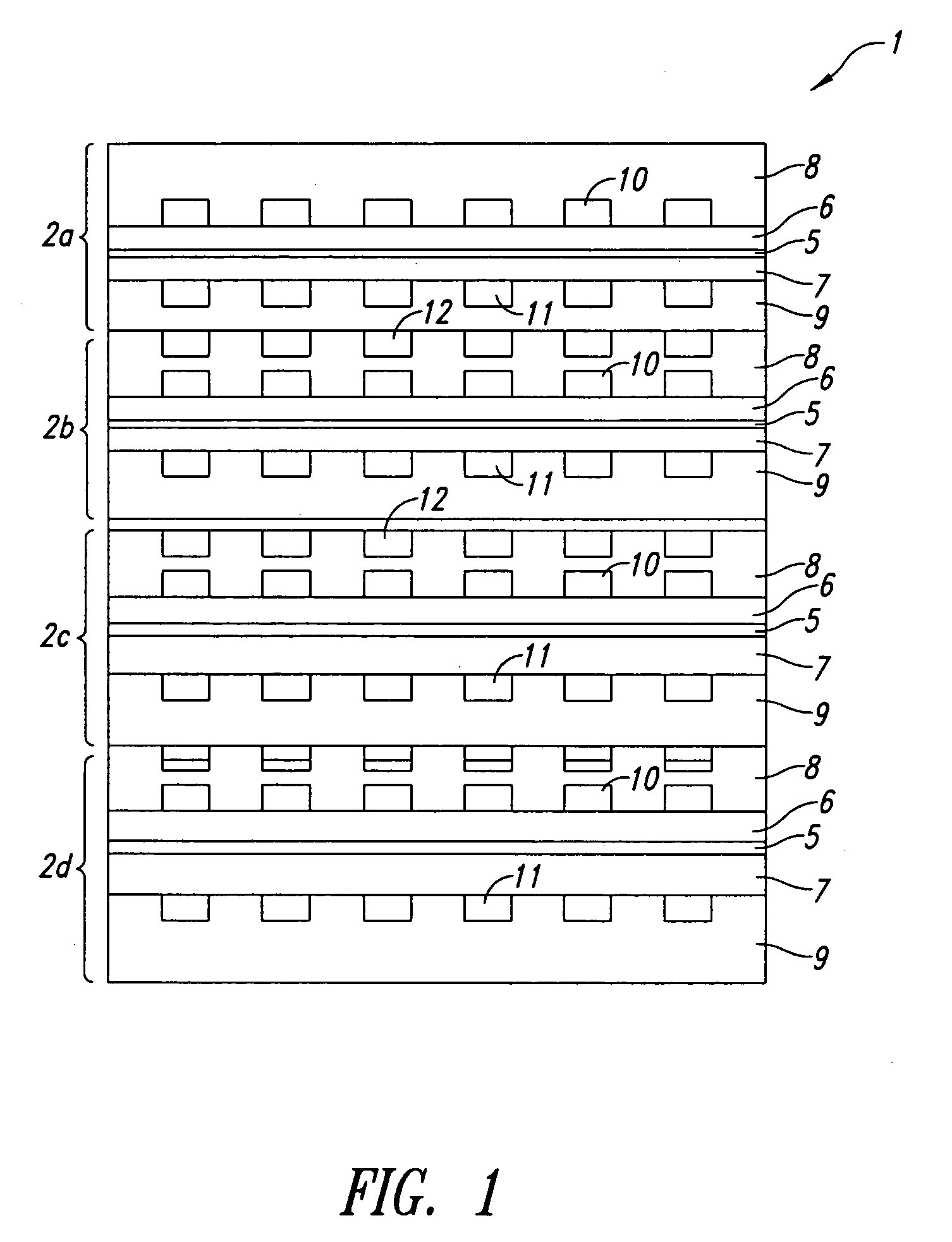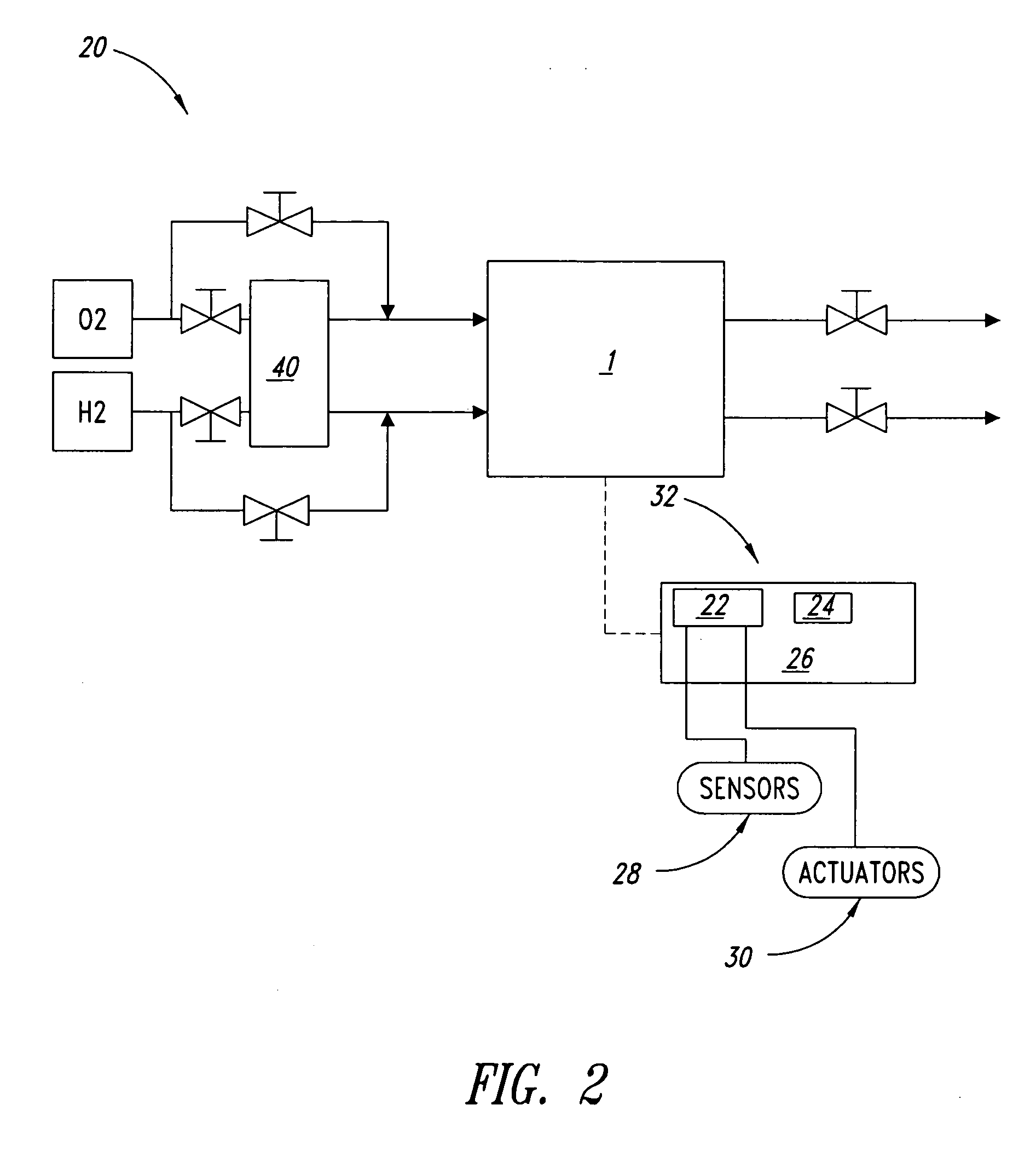Systems and methods for fuel cell shutdown
- Summary
- Abstract
- Description
- Claims
- Application Information
AI Technical Summary
Benefits of technology
Problems solved by technology
Method used
Image
Examples
example 1
[0042] A Ballard fuel cell stack (5 cells) was operated overnight at approximately 300 A. Air was supplied to the fuel cell stack as the oxidant at approximately a pressure of 15 psig, dewpoint temperature of 58° C. and a stoichiometry of 1.8. (Stoichiometry is the ratio of fuel or oxidant supplied to that consumed in the generation of electrical power in the fuel cell.) Substantially pure hydrogen was supplied to the stack at approximately a pressure of 18 psig, dewpoint temperature of 56° C. and a stoichiometry of 2. The coolant inlet and outlet temperatures were approximately 60° C. and 70° C., respectively, during the overnight operation. The load was then reduced to 30 A and the stack was operated for an additional 15 minutes, with air supplied at approximately 5 psig, dewpoint 58° C. and stoichiometry 1.8 and hydrogen supplied at approximately 8 psig, dewpoint 56° C. and stoichiometry 9.6. The coolant inlet and outlet temperatures were both 60° C.
[0043] The fuel cell stack wa...
example 2
[0045] A Ballard fuel cell stack (5 cells) was operated for at least an hour at approximately 300 A. Air was supplied to the fuel cell stack as the oxidant at approximately a pressure of 15 psig, dewpoint temperature of 58° C. and a stoichiometry of 1.8. Substantially pure hydrogen was supplied to the fuel cell stack at approximately a pressure of 18 psig, dewpoint temperature of 56° C. and a stoichiometry of 2. The coolant inlet and outlet temperatures were approximately 60 and 70° C., respectively.
[0046] The fuel cell stack was subsequently shutdown by removing the load and providing air and hydrogen to the fuel cell stack at approximately 0.02 and 0.01 slpm / cm2 fuel cell active area, respectively, for 5 minutes, with both reactant streams bypassing the humidifier and the coolant inlet temperature remaining at 60° C. (The coolant outlet temperature dropped to 60° C. during the purging, since no power production, and hence heat generation, was occurring.) Both reactant streams wer...
example 3
[0049] A Ballard fuel cell stack (20 cells) was operated for at least an hour at approximately 300 A. Air was supplied to the fuel cell stack as the oxidant at approximately a pressure of 15 psig, dewpoint temperature of 59° C. and a stoichiometry of 1.8. A fuel blend of 70% hydrogen (balance nitrogen) was supplied to the fuel cell stack at approximately a pressure of 18 psig, dewpoint temperature of 58° C. and a stoichiometry of 2. The coolant inlet and outlet temperatures were approximately 61° C. and 71° C., respectively. The fuel cell stack was subsequently subjected to a simulated load cycle for approximately 12 minutes, wherein the load was varied between approximately 1% and 50% power, varying the reactant supply pressures and stoichiometries in conjunction with the load variations.
[0050] The fuel cell stack was then shutdown by removing the load and performing the two-tier drying purge described in Example 1, except that the fuel cell stack was force cooled to −15° C. follo...
PUM
 Login to View More
Login to View More Abstract
Description
Claims
Application Information
 Login to View More
Login to View More - R&D
- Intellectual Property
- Life Sciences
- Materials
- Tech Scout
- Unparalleled Data Quality
- Higher Quality Content
- 60% Fewer Hallucinations
Browse by: Latest US Patents, China's latest patents, Technical Efficacy Thesaurus, Application Domain, Technology Topic, Popular Technical Reports.
© 2025 PatSnap. All rights reserved.Legal|Privacy policy|Modern Slavery Act Transparency Statement|Sitemap|About US| Contact US: help@patsnap.com



